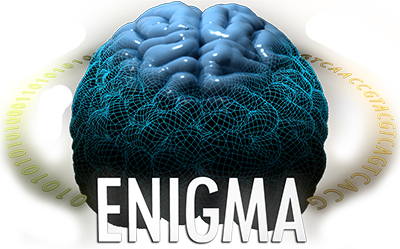 This working group has been formed to explore meta-analyses of cortical and subcortical structures across many different studies and datasets. The initial prospective meta-analysis paper on subcortical volumes has been submitted, but we are actively developing many other projects using the same meta-analytic techniques. Drs. Jessica Turner and Theo van Erp are co-chairs of this working group.
This working group has been formed to explore meta-analyses of cortical and subcortical structures across many different studies and datasets. The initial prospective meta-analysis paper on subcortical volumes has been submitted, but we are actively developing many other projects using the same meta-analytic techniques. Drs. Jessica Turner and Theo van Erp are co-chairs of this working group.
If you are interested in participating in any of these projects, please contact Drs. Jessica Turner and Theo van Erp. We are always open to new datasets and collaborators. The only prerequisite is that you be willing to follow the ENIGMA MOU guidelines. To get started, you should usually run your dataset through the current ENIGMA Imaging Protocols (found here), and we can help you with that.
We are actively looking for collaborative datasets in the follow meta-analytic projects! What is required generally is the willingness to run the needed scripts on your imaging and clinical data. Contact the lead person in each case, to find out how to participate.
Current ENIGMA-SZ projects and the lead person on each one are as follows:
-
Subcortical volume analyses (Theo van Erp, University of California, Irvine) -- this was the first prospective meta-analysis of the group and has been published as of summer 2015, but new groups are encouraged to continue adding to the results, and additional analyses will be developed. Email Theo at tvanerp at uci dot edu
-
Cortical thickness and surface area analyses -- this was the second prospective meta-analysis of the full group and is currently being written up, but new groups are encouraged to continue adding to the results, and additional analyses will be developed. Email Jessica at jturner at mrn.org.
-
Subcortical shape analyses (Lei Wang, Northwestern University, Chicago)--see their group page here
-
Cortical thickness and negative symptoms (Esther Walton, and Stefan Erlich, University Hospital Carl Gustav Carus, Dresden): Email Esther at waltonesther at gmail dot com
-
Normal variation with aging (Danai Dima, King's College, London): Contact Danai at danai.dima at kcl.ac.uk
-
Sibling and first-order relatives study (Neeltje van Haren, University Medical Center, Utrecht): email Neeltje at N.E.M.vanHaren at umcutrecht.nl
-
First episode subjects, repeated scans/longitudinal analysis (Roberto Roiz-Santiañez, University of Cantabria, Santander, Spain): Roberto's email is rroiz at humv.es. This project is likely being coordinated with another longitudinal project through ENIGMA headed by Utrecht.
-
Cannabis effects on structural measures in SZ (Laura Koenders, Academic Medical Center, Amsterdam): Laura can be reached at l.koenders at amc.uva.nl
-
DTI in Schizophrenia (Sinead Kelly, Universiy of Southern California): Contact Sinead at Sinead.Kelly2 at loni.usc.edu . This group will work closely with the ENIGMA-DTI group overall. Visit the ENIGMA-SZ-DTI page for further information.
-
Deficit SZ and white matter microstructure (Gianfranco Spalletta and Pietro de Rossi, Santa Lucia, Rome): Contact derossi05 at gmail dot com. This group will work closely with the ENIGMA-SZ DTI group as well as the Symptoms subprojects.
-
ENIGMA – Early onset psychosis (EOP) The ENIGMA-EOP working group has been formed to explore meta-analysis of existing MRI data of early onset psychosis (EOP) in adolescents and healthy adolescent controls. If you are interested in participating in projects, please contact Dr. Ingrid Agartz (ingrid.agartz at medisin.uio.no) Dr.Tiril Gurholt and Dr. Andrea Raballo. You can see their webpage here: ENIGMA EOP
-
Sulci-based analyses Sulcus-based morphometry is a valuable tool to investigate local brain differences in health and disease, such as in patients with schizophrenia. This technique allows us to a variety of different sulcal features, as the sulcal depth, length, the surface of the sulci and the degree of sulcal fold opening. If you are interested in participating, contact Neda Jahanshad and Fabrizio Pizzagalli (neda.jahanshad at ini.usc.edu, and fpizzagalli at gmail dot com).
The list of participating groups is here: SzWorkingGroupSamples
Minutes from previous meetings/teleconferences and summary statistics regarding this ENIGMA-Schizophrenia project can be found here (Password Protected)
ENIGMA on social media:


